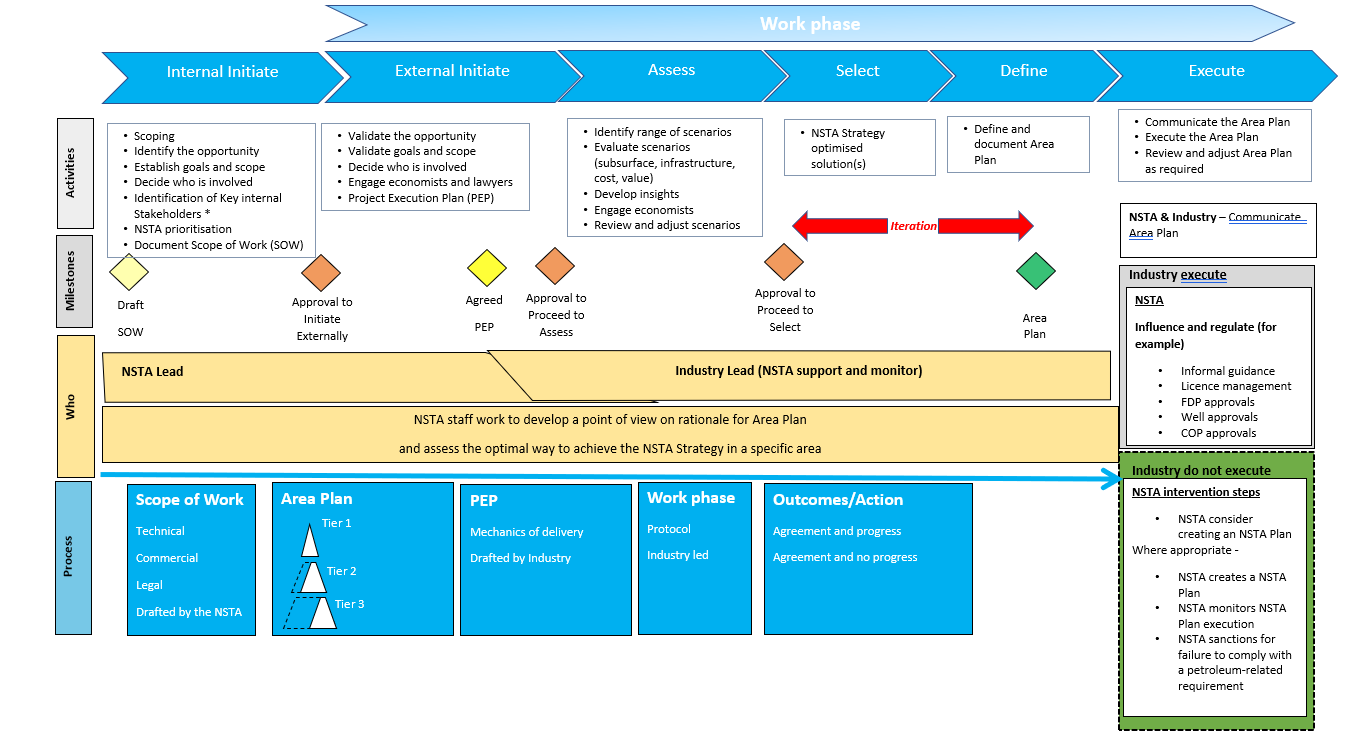
An Area Plan is a cross licence/ cross Hub collaborative framework to ensure economic recovery of oil and gas, whilst supporting the drive to net zero carbon by 2050, in a particular geographical area of the UKCS, based on the analysis of evidence.
Area Plans by region
The NSTA is working closely with operators, licence holders and other interested parties to develop Area Plans across the oil and gas life cycle. These integrate exploration, development, production, and decommissioning to ensure operations ensure economic recovery with the optimum use of infrastructure to extend asset life.
Area Plans, like industry, are evolving, with scopes of work now incorporating energy integration and net zero considerations; all in support of industry meeting the UK Government’s target of net zero by 2050.
Area Plans represent a shared view amongst industry participants of the optimal way to ensure economic recovery, whilst supporting the drive to net zero carbon by 2050, in a specific set of circumstances. For the majority of Area Plans, the NSTA will normally expect industry to lead on developing and delivering the plans.
The NSTA have developed Guidance (revised in November 2023) to aid the industry’s understanding of their responsibilities for developing Area Plans and help improve collaboration across the UKCS. As experience and practice develop, the NSTA will update and review this guidance.
Under the leadership of Steve Phimister, Industry Cultural Change Champion, industry have created Behavioural Guidelines to help those involved in Area Plans. These Guidelines provide advice, share insights from existing Area Plans groups and signpost to relevant tools and resources.
Industry Behavioural Guidelines - Full Version
Industry Behavioural Guidelines - Short Version
Industry Behavioural Guidelines - Supplement to Short Version
Area Plan stage-gate process

The NSTA has developed a stage-gate process (diagram above) to help industry develop and track Area Plans. This can be adapted as appropriate to suit individual Area Plans.
It is the responsibility of industry participants involved in producing and implementing an Area Plan to seek their own assurance that their conduct is compliant with competition law and that an appropriate competition impact assessment has been completed prior to among other things sharing information. The NSTA set out the context and background to competition law in a competition and collaboration note published in November 2016.
If there is insufficient progress from industry during the work phase of developing an Area Plan, the NSTA may intervene to take the lead from industry – i.e. complete the analysis and share findings with relevant Industry parties, and consider whether to produce an NSTA Plan[1] based on the Area Plan. An NSTA Plan sets out the NSTA’s view of how any of the obligations of the Strategy may be met. The NSTA is likely to intervene to take the lead when:
- the process to develop an Area Plan is not proceeding as per the agreed Project Execution Plan (PEP) schedule; or
- the NSTA considers that the emerging Area Plan is not broadly consistent with the core objectives.
If any licensee believes they should be a legitimate participant of an existing Area Plan please contact the NSTA .
[1] NSTA Plan – a plan as described in the OGA Strategy that sets out the NSTA ’s views of how any obligations in the that Strategy may be met.



